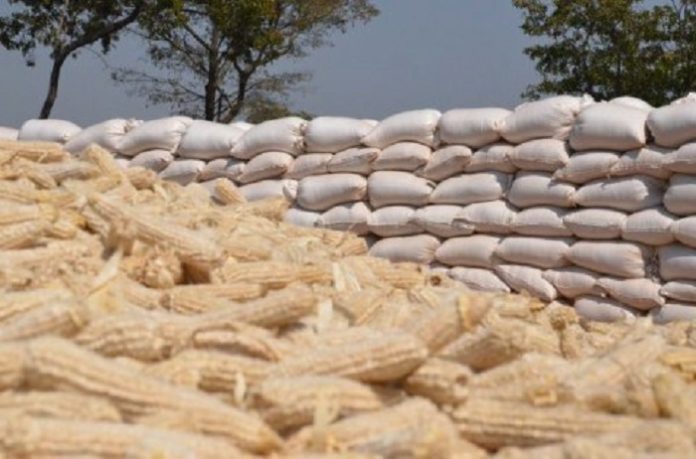Despite having vast amounts of arable land, nutritious indigenous crops, and a booming agricultural sector, Africa still imports most of its grain.
The Russian army’s blockade of Ukraine’s Black Sea ports and the ripple effects of Western sanctions against Moscow have raised international food and fuel prices, leaving millions of Africans facing an “unprecedented food emergency” this year, the World Food Programme has said.
Kenya, Somalia, and large parts of Ethiopia are at risk of acute food insecurity, the UN’s Food & Agriculture Organization said this week. In the Sahel and West Africa, more than 40 million people could go hungry in 2022, according to the FAO, up from 10.8 million people in 2019.
Even before the Russian invasion in late February, the pandemic and a long period of drought had already hit African economies hard. The war in Ukraine made things critically worse since the continent imported about a third of its wheat from Russia and Ukraine. With food prices skyrocketing in global markets, even those countries not reliant on imports from Russia and Ukraine are suffering.
Over the past decade, Africa’s food import bill has nearly tripled, but its agricultural sector has also been growing steadily. The continent has immense potential for feeding itself, with vast amounts of arable lands. But why is it still dependent on imported grain?
Africans produce food, but not for themselves.
A major part of African farmlands is used to grow crops such as coffee, cocoa, and cottonseed oil for export, while the staple crops of the African diet, wheat, and rice, mainly come from outside of the continent.
Much of this imported food could be produced locally, according to the World Bank, while African countries’ self-sufficiency could also be boosted by replacing foreign cereal with regional crops such as fonio, teff, sorghum, amaranthus, and millet. African countries could trade these crops between themselves, creating much-needed jobs for their youth and income for their farmers. The crops would also serve as the basis for a healthy diet.
African countries export large amounts of coffee and cocoa while importing their wheat from outside of the continent.
“Indigenous crops could offer much healthier alternatives to the cereals currently in use,” Pauline Chivenge, a researcher at the African Plant Nutrition Institute in Morocco, told DW. “They have benefits that go beyond sustaining food security. They are more nutritious, so in addition to the necessary calories, they contain higher amounts of protein and vitamins.”
Yet indigenous crops have been neglected for decades, largely due to states and international companies pushing for the mass production of maize and wheat and promoting them as staples. “Research and development and mechanization have focused on maize, rice, and wheat, and producing them in large, mono-crop fields at the expense of the region’s biodiversity,” Chivenge said.
“But the fact is that grains like maize and wheat are not really suitable for growing in most regions of Africa, where water is in short supply,” she added. “They are very much dependent on regular rainfall, which is becoming a real challenge in the wake of climate change.”
Can smallholder farmers feed Africa with indigenous crops?
Wolfgang Bokelmann, food and agriculture economist at Humboldt University in Berlin, agrees that local crops are underutilized. Between 2015 to 2018 he oversaw a study on the local production and consumption of a group of indigenous vegetables in Kenya. “The vegetables we studied had previously fallen out of fashion and used to be known as the poor man’s food, due to dominance of the foreign produce that colonialization brought to Kenya,” he told DW.
Disease and pests like locusts can inflict greater damage to large, mono-crop farms, Chivange said.
That view changed once NGOs and the government began to support the local production of vegetables. “They first found their way to the local day markets, and soon after were introduced in chain supermarkets at a national level,” he said.
In addition to their health benefits and ecological advantages, “indigenous crops can empower subaltern communities, especially female farmers,” Bokelmann said. “There are many types of crops that can grow in home gardens in cities’ margins within a short period of time.” With the continuous trend of migration from villages to cities in Africa, constellations of small plots of indigenous crop farms around the cities can count as vital food sources for the ever-expanding population of slums and marginal communities, he noted.
Dilemmas and challenges
But Chivenge is aware that boosting indigenous crop production faces many hurdles. The smallholder farmers who grow them have limited access to fertilizers, which keeps their productivity low. They also lack the means to process and market their harvests, and fresh, unprocessed food needs quick shipment, which is not an option in most intra-African markets.
Furthermore, African countries cannot simply switch to the production of indigenous crops when exporting cash crops to richer countries is more profitable.
“Most of these nations are faced with a dilemma,” Bokelmann said. “They are forced to choose between the mass production of crops for exporting, which brings them more price value, or feeding the majority of their population by supporting small-scale farming of indigenous crops.”
African indigenous cereals, such as millet, teff, and sorghum, are healthier alternatives to maize, wheat, and rice
“Some say that larger, mono-crop farms are easier to manage and mechanize and therefore more productive,” Chivenge pointed out.” Another argument is that that bulk harvest is easier to market and transport.”
The mass production of exportable crops, its proponents argue, helps Africa’s agriculture develop and modernize and gives African nations economic sway in the global market.
But with the war in Ukraine threatening global food supplies, production and distribution will need to adapt.
The idea of having a globally integrated market used to be popular decades ago, with every country exporting what they best produce themselves while importing what it needs from other countries, pointed out Bokelmann.
“But from the look of the post-pandemic world, it seems that food sovereignty, the ability of each country and community to grow its own food, is much more important,” he said.








